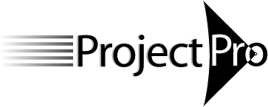Overview of Microsoft Project Courses
Below you can see our offering of courses. If you use Microsoft Project as a stand-alone tool, the four red MS Project courses on the left are for you. If you are in a Project Server or Project Online environment, the blue/green courses on the right are for you: These courses are typically custom, onsite courses. You will earn Professional Development Units (PDUs) with all our courses for PMP® (re)certification by PMI®.
|
|
- The Principle of Dynamic Scheduling: When one thing changes in your project, you should have to change only a single cell in your schedule (Project Online recalculates the rest).
- The Principle of Forecast Scheduling: The schedule by itself should forecast the project (even without forecast algorithms from Earned Value, Critical Chain or Agile)
- Time Model: about 50 checks
- Workload Model: about 76 checks
- Cost Model: about 86 checks
These checks are all derived from the two principles discussed earlier. These checks have been applied by Eric Uyttewaal and his team over the last 20 years. They have evaluated over 1,000 real-life schedules from a variety of industries. Currently, about 100 people are certified as ‘Forecast Scheduler’, for more information, see here.
ProjectPro provides you the opportunity to get certified in Microsoft Project after your course: You need to submit a project schedule that conforms with the checklist for a Time Model, Workload Model or Cost Model (See Certification on our website). We use our own software called Forecast Scheduling Application to assess a submitted schedule; you can download a free 30-day copy of this software to check your own schedule before submitting it.

